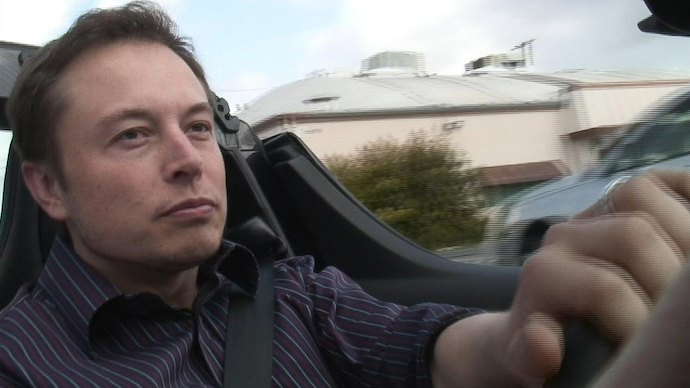Elon Musk Suggests Possible New Mode Of Transportation: The Hyperloop

Image via Flickr/ kqedquest
Much hype has accompanied the plans to construct a high-speed railway from Los Angeles to San Francisco, but the proposed bullet train will be the slowest and most-expensive in the world. Tesla Motors CEO Elon Musk thinks there’s a better way: he calls it the Hyperloop. Musk hasn’t provided much description of his concept, but said it would be a “cross between a Concorde, a rail gun and an air hockey table,” and could transport passengers from Los Angeles to San Francisco in just 30 minutes.
Musk briefly described the Hyperloop at the recent All Things Digital conference, and it’s not a train, a plane or spacecraft, and could be built for only 10 percent of the cost of California’s high-speed rail project. Musk may reveal more details after June 20 when an announcement concerning Tesla is made.
While we remain on the edge of our seats, wondering what Musk has planned for his Hyperloop concept, at least one source wonders if it’s not comparable to a transit concept published by R.M. Salter back in 1972. More than 40 years ago, the physicist wrote a paper describing an underground tube system—called VHST, or Very High Speed Transit System—that could send passengers across the country in just 21 minutes.
“The general principals are relatively straight-forward: electromagnetically levitated and propelled cars in an evacuated tunnel,” Salter wrote. “It is assumed that future transportation approaches will be extensions of present ones, including subways for local mass transit and automobiles for the bulk of intracity and intercity travel…it is expected that there will be improvements in automotive vehicles to make them safer and environmentally acceptable.”
Hmmm… environmentally-friendlier vehicles. Sound familiar?
Echoing many of the sentiments promoting Tesla Motors, Salter said, “We no longer can afford to continue to pollute our skies with heat, chemicals and noise, nor to carve up our wilderness areas and arable land for new surface routes. Nor can we continue our extravagant waste of limited fossil fuels.”
Salter went on to explain that he also expected improved mass transit, which he called “people-mover” systems, to handle local traffic, but the systems would take on much better interfaces to connect them. The VHST would connect directly with such local systems.
“It is visualized that a passenger steps off a subway (or a people-mover from an auto parking facility) and gets on a VHST vehicle in the same terminal.”
Salter went on to explain in further detail how the VHST could work. The “tubecraft” would be driven by electromagnetic waves “much like a surfboard rides on ocean waves.” The waves would be generated by oscillating currents in electrical conductors that would form the “roadbed” structure in the “tubeway.
“Opposing magnetic fields in the vehicle are generated by means of a loop of superconducting cable carrying on the order of a million amperes of current.”
In describing the VHST, Salter predicted speeds as fast as 14,000 miles-per-hour.
“For example, a New Yorker could get off the subway, get on a VHST, and be in Los Angeles in less time than it now takes to get to JFK airport,” Salter explained. “He could leave at lunch hour for a ‘morning’ meeting on the west coast and be back home by quitting time.”
He also described a number of different methods of drilling, any one of which could certainly be used or modified for the present time. But he also forecast the likelihood that such a system could take generations to come to fruition.
“History has shown that some obvious projects, such as tunneling under the English Channel proposed at the time of Napoleon, can be delayed for centuries because of political pressures. On the other hand, relatively primitive societies were able to achieve such engineering feat as the pyramids with a much larger proportional bite out of their gross national product than is posed by the VHST.“
Is it possible that Musk has grabbed hold of Salter’s philosophies? Could Tesla Motors be planning a transportation system similar to the VHST? Right now it’s anyone’s guess, but Musk’s description of the Hyperloop certainly suggests so. We’ll be biting our nails for the next month until we can find out.









































